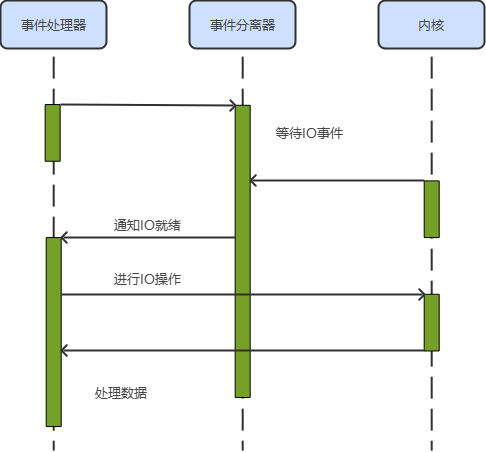- 推荐学习文档
- 基于golang开发的一款超有个性的旅游计划app经历
- golang实战大纲
- golang优秀开发常用开源库汇总
- golang学习笔记01——基本数据类型
- golang学习笔记02——gin框架及基本原理
- golang学习笔记03——gin框架的核心数据结构
- golang学习笔记04——如何真正写好Golang代码?
- golang学习笔记05——golang协程池,怎么实现协程池?
背景
我们总有这样的担忧:总有刁民想害朕,总有人偷偷在目录下删改文件,高危操作想第一时间了解,怎么办? 而且通常我们还有这样的需求:
- 监听一个目录中所有文件,文件大小到一定阀值,则处理;
- 监控某个目录,当有文件新增,立马处理;
- 监控某个目录或文件,当有文件被修改或者删除,立马能感知,进行处理;
怎么解决呢?通常来说有三个办法:
- 第一种:当事人主动通知你,这是侵入式的,需要当事人修改这部分代码来支持,依赖于当事人的自觉;(ps.显然这不太可能)
- 第二种:轮询观察,这个是无侵入式的,你可以自己写个轮询程序,每隔一段时间唤醒一次,对文件和目录做各种判断,从而得到这个目录的变化;(每次轮询累不累?不实时、不直观)
- 第三种:操作系统支持,以事件的方式通知到订阅这个事件的用户,达到及时处理的目的;
很显然第三种相对来说是最好的,具体怎么操作呢?
- 既然是操作系统的支持,那么就应该用到系统调用。系统调用直接使用略微复杂了些,Golang显然已经有了支持,使用fsnotify库就可以轻松实现这个功能。
- fsnotify库就是封装了系统调用,用来监控文件事件的。当指定目录或者文件,发生了创建,删除,修改,重命名的事件,里面就能得到通知。
Golang 的 fsnotify 的使用
- 使用方法非常简单:
- 先用 fsnotify 创建一个监听器;
- 然后放到一个单独的 goroutine 监听事件即可,通过 channel 的方式 或者 启动新的 goroutine 进行事件传递;
package main
import (
"github.com/fsnotify/fsnotify"
log "github.com/sirupsen/logrus"
)
func TestFileMonitor() {
// 创建文件/目录监听器
watcher, err := fsnotify.NewWatcher()
if err != nil {
log.Fatal("watcher new err: [%+v]", err)
return
}
defer watcher.Close()
done := make(chan bool)
go func() {
for {
select {
case event, ok := <-watcher.Events:
if !ok {
return
}
// 打印监听事件
log.Print("event:", event)
// 可以启动新的goroutine或使用channel进行事件传递
case _, ok := <-watcher.Errors:
if !ok {
return
}
}
}
}()
// 监听当前目录
err = watcher.Add("./")
if err != nil {
log.Fatal("err add dir: [%+v]", err)
}
<-done
}
我们来测试一下,先把上述程序编译,然后跑起来:

然后我们来创建一个文件:

使用 vim 打开这个文件,写入一行数据,然后关闭退出:
最终运行结果:

深层原理
fsnotify 是跨平台的实现,这里只讲 Linux 平台的实现机制。fsnotify 本质上就是对系统能力的一个浅层封装,主要封装了操作系统提供的两个机制:
- inotify 机制
- epoll 机制
内核版本:Linux 4.15.0-76-generic
1、inotify 机制
- 这是一个内核用于通知用户空间程序文件系统变化的机制。
- 划重点:其实 inotify 机制的诞生源于一个通用的需求,由于IO/硬件管理都在内核,但用户态是有获悉内核事件的强烈需求,比如磁盘的热插拔、文件的增删改等操作。这里就诞生了三个异曲同工的机制:hotplug 机制、udev 管理机制、inotify 机制。
- inotify 的三个接口:
// fs/notify/inotify/inotify_user.c
// 创建 notify fd
inotify_init1()
// 添加监控路径
inotify_add_watch()
// 删除一个监控
inotify_rm_watch()
// 用法非常简单,分别对应 inotify fd 的创建,监控的添加和删除。
1.1 inotify 怎么实现监控的?
- inotify 支持监听的事件非常多,除了增删改,还有访问、移动、打开、关闭、设备卸载等等事件。
- 内核要上报这些文件 api 事件必然要采集这些事件,它们在哪一个内核层次采集的呢?
系统调用 -> vfs -> 具体文件系统( ext4 )-> 块层 -> scsi 层
(当然是 vfs 层,这是必然的,因为这是所有“文件”操作的入口。
)
- 以 vfs 的 read/write 为例,我们看一下具体实现:
ssize_t vfs_read(struct file *file, char __user *buf, size_t count, loff_t *pos)
{
// ...
ret = __vfs_read(file, buf, count, pos);
if (ret > 0) {
// 事件采集点:访问事件
fsnotify_access(file);
}
}
ssize_t vfs_write(struct file *file, const char __user *buf, size_t count, loff_t *pos)
{
// ...
ret = __vfs_write(file, buf, count, pos);
if (ret > 0) {
// 事件采集点:修改事件
fsnotify_modify(file);
}
}
- fsnotify_access 和 fsnotify_modify 就是 inotify 机制的一员。有一系列 fsnotify_xxx 的函数,定义在 include/linux/fsnotify.h ,这函数里面全都调用到 fsnotify 这个函数。
static inline void fsnotify_modify(struct file *file)
{
// 获取到 inode
if (!(file->f_mode & FMODE_NONOTIFY)) {
fsnotify_parent(path, NULL, mask);
// 采集事件,通知到指定结构
fsnotify(inode, mask, path, FSNOTIFY_EVENT_PATH, NULL, 0);
}
}
- 我们简单的梳理一下 fsnotify 函数实现的调用栈:
fsnotify
-> send_to_group
-> inotify_handle_event
-> fsnotify_add_event
-> wake_up (唤醒等待队列,也就是 epoll)
- 再看一个具体的实现(其实非常简单,就是一个事件通知):
// 把事件通知到相应的 group 上;
int fsnotify(struct inode *to_tell, __u32 mask, const void *data, int data_is, const unsigned char *file_name, u32 cookie)
{
// ...
// 把事件通知给正在监听的 fsnotify_group
while (fsnotify_iter_select_report_types(&iter_info)) {
ret = send_to_group(to_tell, mask, data, data_is, cookie, file_name, &iter_info);
if (ret && (mask & ALL_FSNOTIFY_PERM_EVENTS))
goto out;
fsnotify_iter_next(&iter_info);
}
out:
return ret;
}
static int send_to_group(struct inode *to_tell, __u32 mask, const void *data, int data_is, u32 cookie, const unsigned char *file_name, struct fsnotify_iter_info *iter_info)
{
// 通知相应的 group ,有事来了!
return group->ops->handle_event(group, to_tell, mask, data, data_is, file_name, cookie, iter_info);
}
// group->ops->handle_event 被赋值为 inotify_handle_event
int inotify_handle_event(struct fsnotify_group *group, struct inode *inode, u32 mask, const void *data, int data_type, const unsigned char *file_name, u32 cookie, struct fsnotify_iter_info *iter_info)
{
// 唤醒事件,通知相应的 group
ret = fsnotify_add_event(group, fsn_event, inotify_merge);
}
// 添加事件到 group
int fsnotify_add_event(struct fsnotify_group *group, struct fsnotify_event *event, int (*merge)(struct list_head *, struct fsnotify_event *))
{
// 唤醒这个等待队列
wake_up(&group->notification_waitq);
}
- 这里面的逻辑非常简单:把这次的事件通知给关注的 fsnotify_group 结构体,换句话说,就是把事件通知给 inotify fd。
- 这个就有意思了,inotify fd 句柄创建的时候,file->private_data 上就绑定了一个 fsnotify_group ,这样的话,针对文件的所有操作,都能有一份事件发送到 fsnotify_group 上,inotify fd 就有可读事件了。
1.2 其实 inotify 也有支持 epoll 机制
- 在前面我们也提到了,Golang 的 fsnotify 主要使用了两个系统机制: inotify 和 epoll。fsnotify 则把 inotify fd 放到 epoll 池里面管理。
- 换句话说,inotify fd 也同样支持 epoll 机制。有最明显的两个特征:
- inotify fd 的 inotify_fops 实现了 poll 接口;
- inotify fd 相关的某个结构体一定有个 wait 队列的表头;
- 啥结构体?这个结构体就是 fsnotify_group 。被存放在 inotify fd 对应的 file->private_data 字段。这个 wait 队列表头就是 group->notification_waitq 。
来看一眼结构体的简要关系:

2、epoll 机制
- 回到 Golang 的 fsnotify 库的实现原理,fsnotify 利用的第二个系统机制就是 epoll 。inotify fd 通过 inotify_init1 创建出来之后,会把 inotify fd 注册进 epoll 管理,监听 inotify fd 的可读事件。
2.1 inotify fd 的可读事件能是啥?
- 其实就是它监听的文件或者路径发生的增删改的事件,这些事件就是内核 inotify 报上来的
- 报上来之后,epoll 监控到 inotify fd 可读,用户通过 read 调用,把 inotify fd 里面的“数据”读出来。这个读出来的所谓的“数据”就是一个个文件事件
我们看一眼整体的模块层次:

总结
- Golang 的 fsnotify 库很方便对文件、目录做监控,这里的充满了想象力,因为一切皆文件,这代表着一切可监控。童鞋们,这里的想象空间非常大哦;
- 通过 fsnotify 我们映证了 vim 的秘密;
- Golang 的 fsnotify 其实操作系统能力的浅层封装,Linux 本质就是对 inotify 机制;
- inotify 也是一个特殊句柄,属于匿名句柄之一,这个句柄用于文件的事件监控;
- fsnotify 用 epoll 机制对 inotify fd 的可读事件进行监控,实现 IO 多路复用的事件通知机制;
关注我看更多有意思的文章哦!👉👉



















